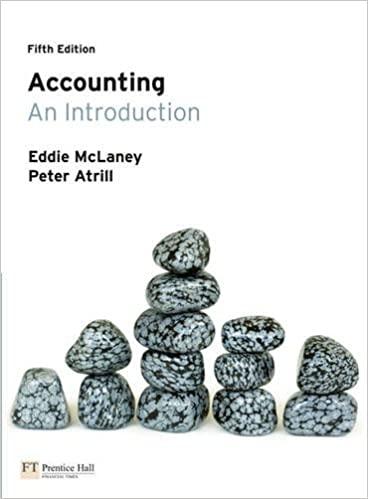
Question Three Please identify the following statements as true or false by circling the letters "T" or "F" corresponding to each statement below: 20 marks 1. The role of accounting is to provide many different users with financial information to make economic decisions TIF 2. Financial accounting provides information to all users, while the main focus for managerial accounting is to provide information to the shareholders. 3. The primary role of accounting is to determine the amount of taxes a business will be required to pay to taxing entities. 4. If the liabilities owed by a business total $300,000 and owner's equity is equal to $300,000, then the assets also total $300,000 TI 5. If total assets decreased by $30,000 during a specific period and owner's equity decreased by $35,000 during the same period, the period's change in total liabilities was a S65.000 increase. TF 6. If total assets increased by $190,000 during a specific period and liabilities decreased by $10.000 during the same period, the period's change in total owner's equity was a S200,000 increase. T 7. If net income for a proprietorship was $50,000, the owner withdrew S20,000 in cash, and the owner invested $10,000 in cash, the capital of the owner increased by S40,000. T F F 8. Paying an account payable increases liabilities and decreases assets. TIF 9. Assets that are used up during the process of carning revenue are called expenses. T 10. An income statement is a summary of the revenues and expenses of a business as of a specific date. TIF 11. The balance sheet represents the accounting equation. T 12. The revenue recognition principle requires that the reporting of revenue be included in the period when cash for the service is received F 13. Revenues and expenses should be recorded in the same period to which they relate 14. The matching principle supports matching expenses with the related revenues. T 1 7 F 15. The updating of accounts when financial statements are prepared is called the adjusting process. T/F 16. An adjusting entry would adjust revenue so it is reported when earned and not when cash is received. 17. Unearned revenue is a liability. 1 F 18. A company pays an employee $3,000 for a five-day workweek, Monday-Friday. The adjusting entry on December 31, which is a Wednesday, is a debit to Wages Expense of $1,800, and a credit to Wages Payable of $1,800. T / F 19. A company realizes that the last two days' revenue for the month was billed but not recorded. The adjusting entry on December 31 is a debit to Accounts Receivable and a credit to Fees Earned. F 20. A company receives $360 for a 12-month trade magazine subscription on August 1. The adjusting entry on December 31 is a debit to Unearned Subscription Revenue of $150 and a credit to Subscription Revenue of $150. T 1 F








